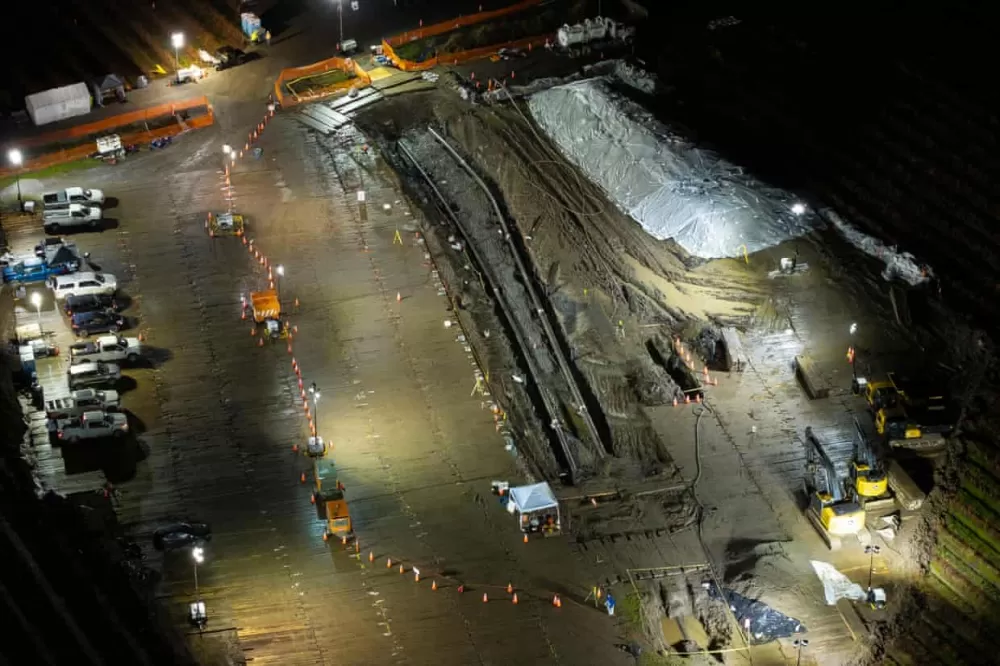A Major Pipeline Rupture Devastates the Pacific Northwest
Share- Nishadil
- November 26, 2025
- 0 Comments
- 3 minutes read
- 12 Views

Olympic Pipeline Breach Unleashes Fuel Spill Near Washington-Oregon Border, Igniting Environmental Crisis
A significant rupture on the Olympic Pipeline, carrying refined petroleum, has caused a substantial fuel spill near the Washington-Oregon state line, triggering an urgent environmental emergency and widespread public concern.
It's the kind of news that just makes your heart sink, isn't it? Reports emerged this Tuesday, November 25th, 2025, confirming a significant breach in the Olympic Pipeline, right there in our beautiful Pacific Northwest. This isn't just a minor drip; we're talking about a substantial spill of what's believed to be refined petroleum product, sending emergency crews scrambling and environmentalists, well, they're already up in arms.
The incident, first detected in the early hours, appears to have occurred somewhere along the crucial stretch near the Washington-Oregon state line. Initial observations suggest the leak wasn't immediately obvious, perhaps a slow seep that then escalated, allowing a considerable amount of fuel to escape before it was finally pinpointed. Just imagine, a black slick spreading across the landscape, or worse, finding its way into our pristine waterways. It's truly a devastating thought, isn't it?
Details are still a bit hazy, as you'd expect in the initial chaos of such an event, but the sheer scale of the response indicates this is far from a small matter. Hazmat teams, environmental protection agencies, and local emergency services have all converged on the suspected site. Their primary objective, of course, is containment – to stop the flow and prevent further ecological damage. But as anyone who's ever dealt with a spill knows, that's often easier said than done, especially with a volatile substance like fuel.
The Olympic Pipeline, for those who might not know, is a really vital artery, carrying millions of gallons of gasoline, diesel, and jet fuel daily from refineries in Washington down through Oregon. It's absolutely critical for regional energy needs, but its very existence carries inherent risks, a fact brought into stark, sickening relief by today's events. We've seen these kinds of incidents before, and each time, it just hammers home the fragility of our ecosystems when confronted with industrial accidents.
Environmental groups, predictably, are already voicing their profound alarm. They're highlighting the potential for long-term contamination of sensitive habitats, wildlife impact – particularly to aquatic species if the spill has indeed reached streams or rivers – and the broader implications for the region's natural beauty and public health. One activist I spoke with earlier today, visibly shaken, simply said, "How many times must this happen before we truly learn?"
The pipeline operator, Phillips 66, which took over from BP years ago, has yet to issue a comprehensive statement, though they are undoubtedly coordinating with authorities. We'll be looking for answers, you know, about the cause. Was it equipment failure? Corrosion? A breach in protocol? These questions aren't just for curiosity; they're essential for accountability and for preventing future disasters.
For now, the focus remains squarely on the emergency response: deploying booms, skimming contaminated water, and meticulously cleaning affected land. It's a grueling, painstaking process, and honestly, the full extent of the environmental damage won't be known for weeks, possibly months. But one thing is clear: this latest incident serves as a stark, unwanted reminder of the delicate balance between our energy demands and the urgent need to protect our planet. It truly makes you wonder if we're doing enough to safeguard these vital, yet vulnerable, resources.
Disclaimer: This article was generated in part using artificial intelligence and may contain errors or omissions. The content is provided for informational purposes only and does not constitute professional advice. We makes no representations or warranties regarding its accuracy, completeness, or reliability. Readers are advised to verify the information independently before relying on







